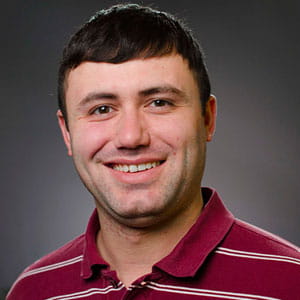More are Positive About HPV Vaccine on Twitter Than Not, Drexel Study Finds
 By Frank Otto
By Frank Otto


Like it or not, social media has become a driving force in the way many people get information on health topics.
And Philip Massey, PhD, MPH, assistant professor in Drexel University’s Dornsife School of Public Health, knows that health professionals need to stay current on what’s being talked about.
“It is not a question of, ‘ Are people using social media for health information?’ but rather, ‘How much are people using it and how can we help them find information that is valid and pertinent to their lives?’” Massey said.
With that in mind, Massey decided to lead a study — published in the Journal of Medical Internet Research and supported by a grant from the American Cancer Society — into how people are communicating on Twitter about the human papillomavirus (HPV) vaccine. And what he found was actually a little surprising: there was much more positive chatter about the vaccine than negative.
“In our sample, I expected to see a large number of negative tweets based on traditional news coverage of the topic and because HPV can be portrayed as controversial because it brings together the fields of sexually transmitted infections, immunizations and cancer prevention,” Massey said. “But that wasn’t the case on Twitter, we found.”
The vaccine protects against HPV, the most common sexually transmitted infection in the United States, and has been shown to be particularly effective against the strains that lead to potentially lethal cancers, such as cervical cancer. However, a vocal portion of the population has been lashing out — especially online — against the immunization due to perceived side effects.
Massey’s study sought to quantify how much content that negative population might be posting online. And through analyzing nearly 200,000 English-language tweets between the summers of 2014 and 2015, Massey and his team found that the most popular sentiment attached to tweets about the HPV vaccine were positive. Almost 39 percent of tweets gathered were classified as positive, while negative sentiments were detected in just a little more than 25 percent of the tweets analyzed.
“It is always encouraging to see that more positive messages about health are being discussed and disseminated on Twitter,” Massey said. “This is a refreshing balance to negative stories about vaccines and immunizations that sometimes surface in popular news media due to sensationalism or negative consequences.”
Prevention and protection were popular topics in tweets classified as positive or neutral (they came up in 27 percent of positive tweets and nearly 26 percent of neutral tweets) while the topic of side effects came up in roughly half of negative tweets. For context, side effects were mentioned in 17 percent of positive tweets and 15 percent of neutral tweets.
There was a difference when it came to tweets that just mentioned the HPV vaccine generally, and those that had specific brand-names in them. The most common words in the general tweets were related to prevention while more negative terms — including “exposed” and “cdcwhistleblower” — were associated with brands.
“It may be easier to villainize a specific name-brand vaccine because of advertising, pharmaceutical involvement, potential conflicts of interest and conspiracy theories,” Massey related. “Using the generic term ‘HPV vaccine’ may present as more objective or neutral in terms of not promoting one company’s product over another, or not allowing space for conspiracy theories.”
HPV was a good topic to explore the intersection of social media and health information, Massey believes, because of its importance to adolescent health.
“Kids, adolescents and young people, in general, are priority populations for HPV vaccination,” Massey explained. “These same populations are some of the highest utilizers of social media. Parents play a key role in deciding whether their kids will get the vaccine, and as more millennials reach parenthood, social media may play an even bigger role in cancer prevention, especially concerning HPV vaccination.”
For that reason, health and media literacy are skills that need boosting, Massey believes. And health professionals will be a vital part of that.
“We need to think more about how we can help strengthen people’s ability to obtain, evaluate and apply well-founded information from trustworthy sources to inform health decisions,” Massey said.
Those interested in reading the full study, “Applying Multiple Data Collection Tools to Quantify Human Papillomavirus Vaccine Communication on Twitter,” can access it here.
In This Article
Contact
Drexel News is produced by
University Marketing and Communications.